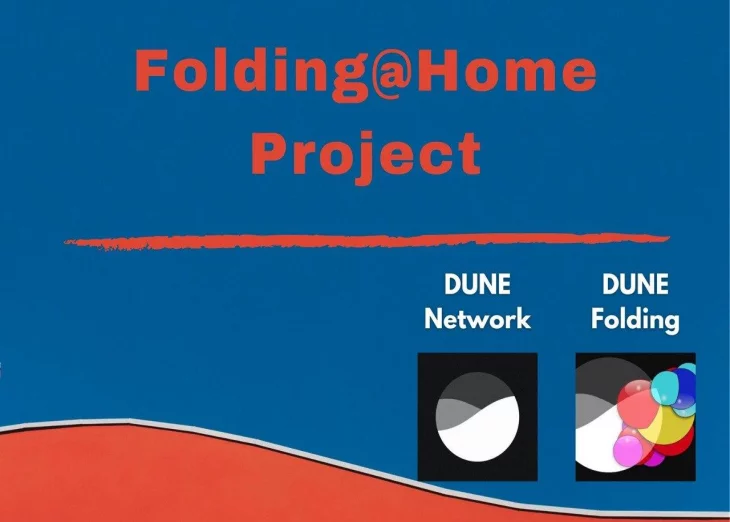Dune Folding – LdPOS Crypto-Payments Meet Decentralized Complex Protein Folding Calculations

Medical science has made significant advancements over the last decade with the implementation of new technological innovative solutions. The arrival of blockchain technology and distributed ledger has also opened doors for decentralized data sharing worldwide.
Medical science has made significant advancements over the last decade with the implementation of new technological innovative solutions. The arrival of blockchain technology and distributed ledger has also opened doors for decentralized data sharing worldwide.
Folding@Home is one such interesting project that leverages the power of distributed computing for simulating protein dynamics. Dune Folding is a new initiative supported by Dune network that works alongside the Folding@Home application to encourage participants with its native coin, DUN.
The Dune Blockchain Network
The Dune Blockchain is a secured Web 3.0 platform designed to host enterprise-grade decentralized applications and smart contracts. Providing an entire ecosystem of DApps and tools, the platform’s major focus lies on security and accessibility.
The platform provides technical support to businesses and entrepreneurs to innovate and scale up using its network. It also supports multiple smart contract languages to design DApps and secure transactions.
The Dune blockchain started life with its own genesis block last year, on June 4, 2019. Dune uses an open-source software – an extended version of the Tezos network – to create a new platform that focuses on the easy development and deployment of decentralized and distributed applications.
Dune Folding – Rewards for Simulating Protein Dynamics Using Distributed Computing
Dune Folding is an initiative implemented by Dune community baker, TwenteBaking, which rewards participants of distributed computing project – Folding@Home – that simulates protein dynamics using spare computing resources. Volunteers run simulations of protein dynamics using an application that runs in the background of their device. Insights gathered from the simulation data will further help scientists to understand the biological interactions of viral proteins, and thus create new opportunities for developing therapeutics. In other words, scientists are better able to find cures and treatments for conditions affecting the lives of millions of people worldwide, including Covid-19.
In most of the scenarios, the folding work isn’t paid and all the computing power donated goes free of charge to the folding network. By leveraging the staking capabilities of Dune-Network, Dune Folding’s mission is to compensate the folders in DUN cryptocurrency.
Due to the Liquid Delegated Proof-of-Stake consensus model by Dune Network, rewards for volunteers are automatically distributed every cycle (approximately 3 days). The model is also non-profit and designed to be self-sustaining with time, according to TwenteBaking.
To get started, all you need is a CPU or GPU and a Dune Network wallet. To proceed further, one can refer to this detailed Dune Folding tutorial.
Conclusion
The Folding@home project (FAH) has put a major emphasis on understanding protein folding, and the diseases that result from misfiling and aggregation. It also aims to seek and develop other novel computational techniques for developing new drugs and bringing them to the market and notably, are screening simulations on molecules that can fight against the novel Coronavirus.
Dune Folding uses blockchain technology to incentivize the project participants who contribute their computing resources for the cause. This is a good way to keep volunteers motivated and build the Folding@home community further.
Source - https://cryptoshib.com/dune-folding-decentralized-protein-calculations/














Article comments